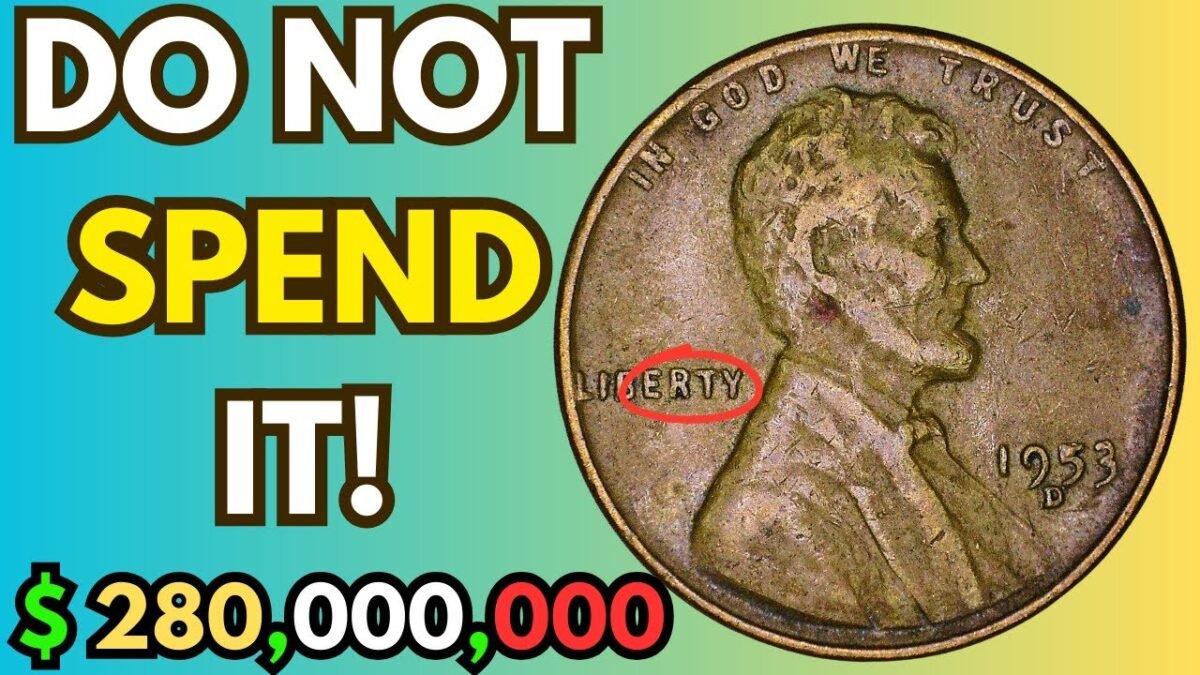Lincoln Wheat Penny: The Lincoln Wheat Penny is one of the most famous coins in American history. First introduced in 1909 to honor President Abraham Lincoln’s 100th birthday, this penny quickly became a symbol of American culture and history. Unlike modern pennies, the Lincoln Wheat Penny features two stalks of wheat on its reverse side, representing prosperity and growth. While most of these pennies are worth only their face value, certain rare editions can fetch astonishing prices at auctions. Among them, a Lincoln Wheat Penny has recently made headlines for being valued at an incredible $144,000, sparking curiosity among collectors and casual enthusiasts alike.
Why Some Lincoln Wheat Pennies Are Extremely Valuable
Not all Lincoln Wheat Pennies are worth thousands of dollars. Their value depends on factors like rarity, condition, mint mark, and production errors. Coins that were produced in limited quantities or contain minting mistakes often become highly sought after by collectors. For example, the 1943 copper Lincoln Penny, mistakenly made during a year when pennies were primarily steel due to wartime needs, is one of the most famous rare coins. Similarly, pennies that have been preserved in near-perfect condition for decades, without scratches or wear, can also attract very high prices.
This heading explains why certain coins, despite being common in circulation, can have extraordinary value. It sets the foundation for understanding the $144,000 valuation.
How a Penny Can Be Worth $144,000 and Still Be Found in Circulation
It might sound unbelievable, but even coins worth hundreds of thousands of dollars can still appear in everyday transactions. Many rare coins were once part of general circulation before their value was recognized. Someone could find a valuable Lincoln Wheat Penny in a jar of coins at home, in a bank roll, or even dropped on the street. This phenomenon happens because, for decades, people collected coins casually without knowing their potential rarity or worth. Sometimes, these pennies remain unnoticed until a collector or coin expert identifies them.
The goal of this heading is to address the surprising fact that incredibly valuable coins can still be found in ordinary places, making the story more fascinating and relatable.
Famous Lincoln Wheat Pennies and Their Stories
Over the years, several Lincoln Wheat Pennies have gained fame due to their rarity and high auction prices. One of the most notable examples is the 1909-S VDB penny, which was part of the first year of the coin’s production. Only a small number of these coins were minted, making them extremely rare. Another example is the 1955 doubled die penny, where the doubling of the letters on the coin’s face creates a distinct and highly collectible error. Stories like these add a layer of excitement to coin collecting, attracting both seasoned collectors and new enthusiasts who hope to discover their own hidden treasure.
This heading highlights real-world examples, giving readers a concrete sense of what makes these coins so special and valuable.
How Collectors Identify Valuable Wheat Pennies
Collectors often rely on careful inspection and knowledge of coin history to identify valuable Lincoln Wheat Pennies. Key features they examine include the coin’s date, mint mark, material, and condition. Magnifying tools can reveal tiny minting errors that drastically increase a coin’s worth. Professional grading services provide official assessments, rating coins from “Good” to “Mint State” based on their condition. Coins with higher grades and rare characteristics naturally fetch higher prices at auctions and sales. Understanding these factors is essential for anyone curious about coin collecting or hoping to identify a hidden gem.
This heading educates the reader about the process of identifying valuable pennies, making the topic informative and practical.
Why the Lincoln Wheat Penny Still Captures Our Imagination
Even more than a century after its introduction, the Lincoln Wheat Penny continues to captivate collectors and history lovers alike. Beyond its monetary value, it represents a piece of American heritage, reminding us of President Lincoln’s legacy and the country’s early 20th-century history. Its simple yet elegant design, along with the chance that even ordinary coins could hold extraordinary value, makes it a timeless object of fascination. Finding a rare penny in circulation today is like discovering a small piece of history that connects the past with the present.
This heading wraps up the story, explaining why the coin remains iconic and why people are drawn to it beyond just financial interest.
FAQs About the Lincoln Wheat Penny
Can a Lincoln Wheat Penny really be worth $144,000?
Yes, under rare circumstances, certain editions or mint errors can reach extremely high auction values.
Are these rare pennies still circulating?
It’s possible. While most have been collected, some may still appear in everyday transactions.
How can I identify a valuable Lincoln Wheat Penny?
Look for unusual mint marks, rare years, minting errors, and overall coin condition. Professional grading is recommended.
Why is the wheat design significant?
The wheat stalks symbolize prosperity and growth, making the penny both historically and visually meaningful.





